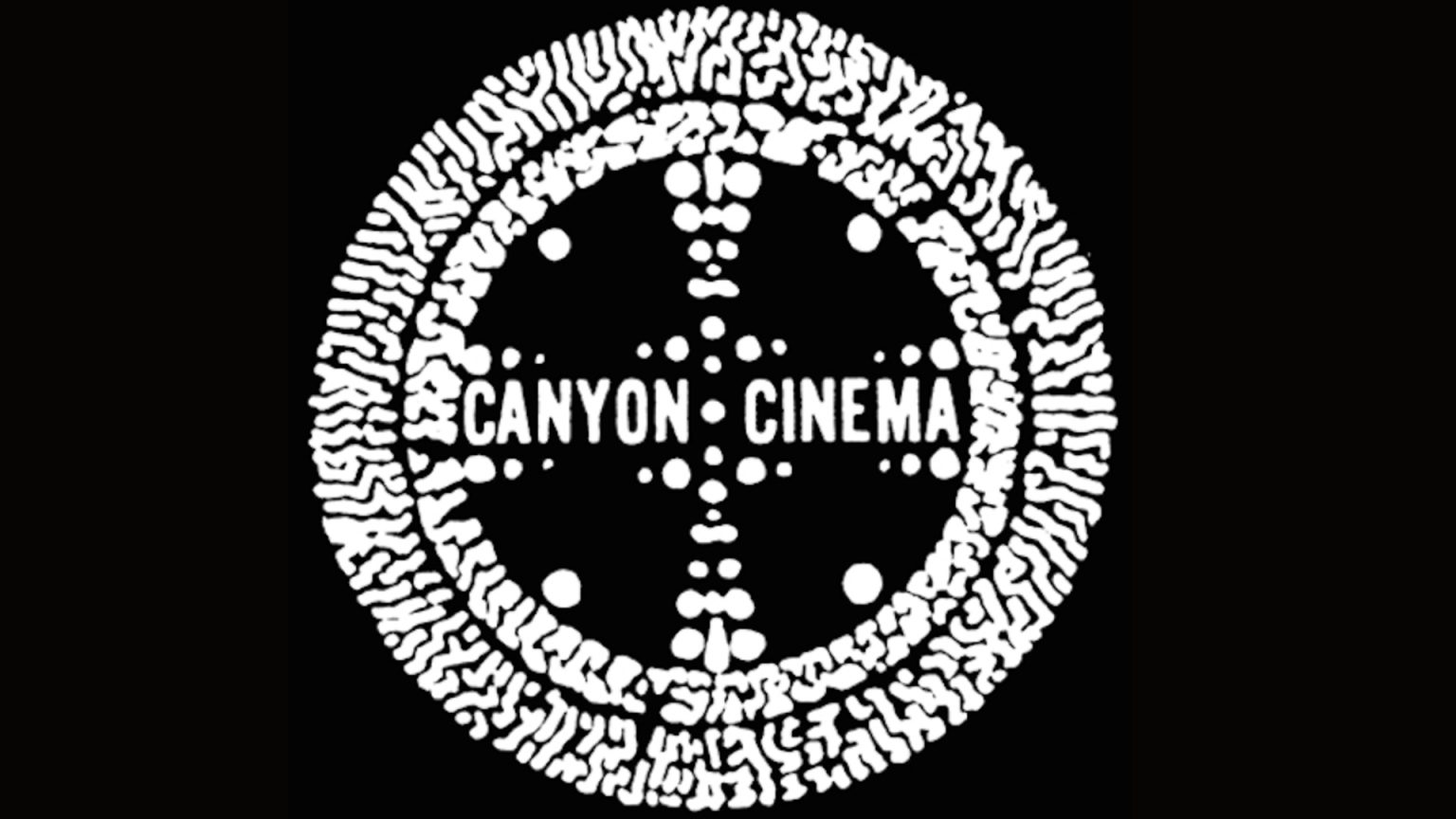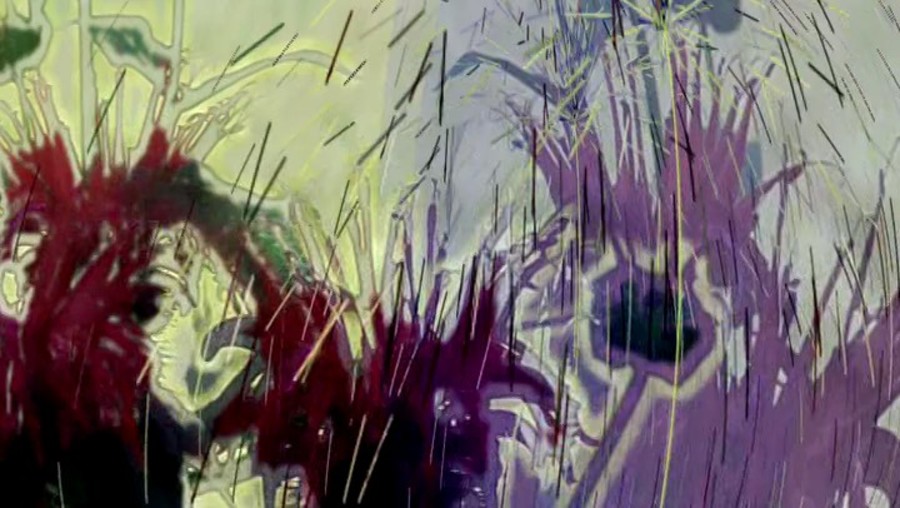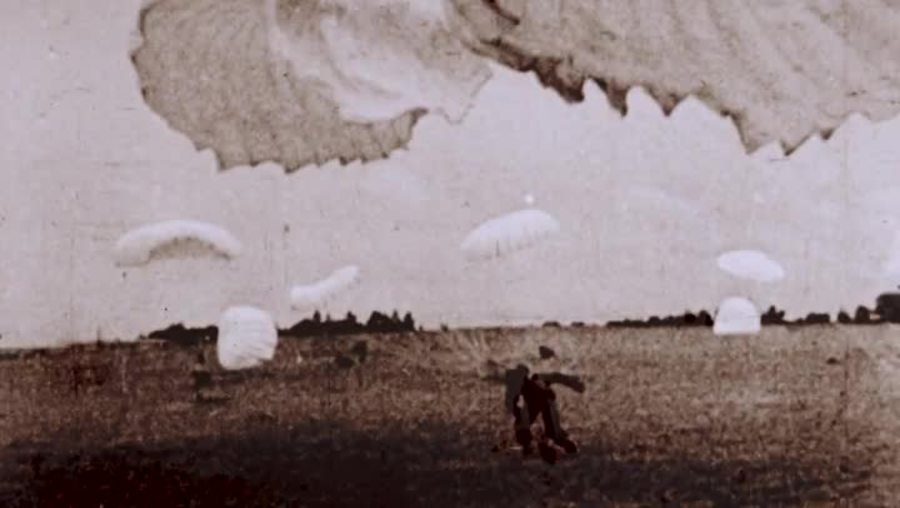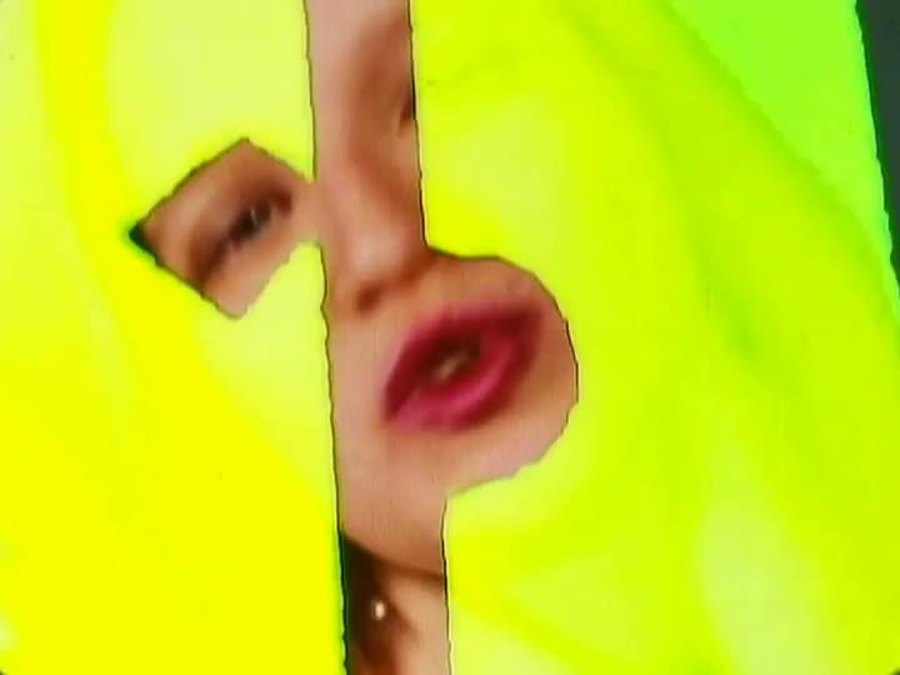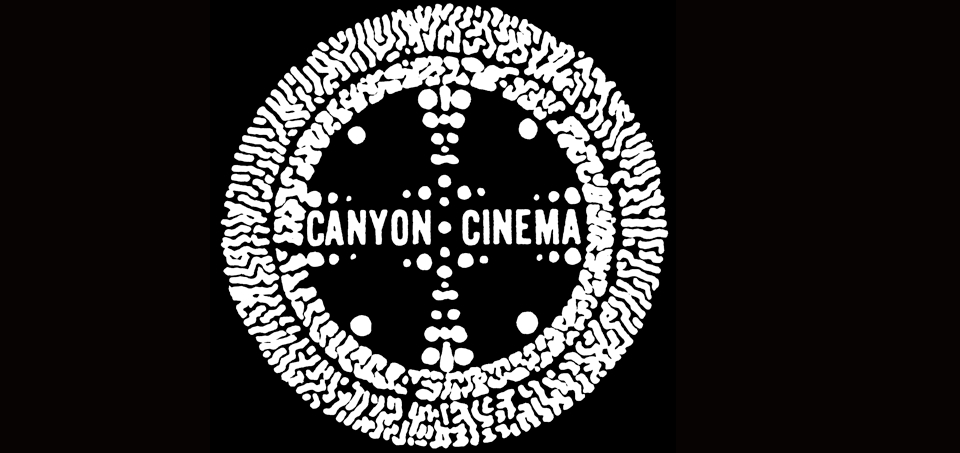
On a warm evening in June, I climbed a narrow staircase to the second floor of a nondescript building in San Francisco’s South of Market neighborhood. A few store-bought cookies and some red wine were on offer before entering an intimate screening room which could seat about fifty people. The lights went down, the hyper speed metronome of a film projector clicked, and we were awash in the mesmerizing beauty of Chick Strand’s Angel Blue Sweet Wings. This hazy, sun-drenched film poem, set to Aretha Franklin’s “Dr. Feelgood,” was the perfect beginning to a program that would celebrate the sublime nature of light captured on celluloid film. I was here, in San Francisco, in 2015, enjoying an installment of Canyon Cinema‘s Salon Series. The young independent filmmaker Kate McCabe was premiering her new film, You and I Remain, and she selected some work from the Canyon Cinema collection which has moved and inspired her, including two films by Chick Strand, who helped found what became Canyon Cinema in the early 1960s with Bruce Baillie, and a pair of films by McCabe’s friend and mentor, Pat O’Neill. Much has changed in San Francisco in the last fifty-four years, summers of love, bubbles of tech, the current wave of uber-gentrification making it difficult for independent artists and the organizations that support and exhibit their work to survive here, and yet Canyon Cinema, one of the most significant repositories of independent, non-commercial, experimental, avant-garde and artist-made moving images, perseveres.
Bruce Baillie began showing films in the back yard of the house he was renting in Canyon, California, just over the hills east of Oakland in 1961. An aspiring filmmaker, he took a job at Safeway and took out a loan to earn the money to purchase a projector and an army surplus screen. The screenings were informal, neighborhood affairs, and could include family films, avant-garde films, and work that he and his filmmaker friends were creating. Baillie reached out to a number of independent filmmakers, including Jonas Mekas, who was, around the same time, establishing the New American Cinema Group, and the Film-Makers’ Cooperative in New York City, as well as Stan Brakhage, Larry Jordan, and Jordan Belson. By 1962 the screenings were moving west to Berkeley, sometimes in the back yard of filmmaker Chick Strand, who became deeply involved with Canyon, and eventually to San Francisco, were seen through history’s lens, the early stages of a potent avant-garde renaissance, in which Canyon Cinema would participate and help define, was occurring.
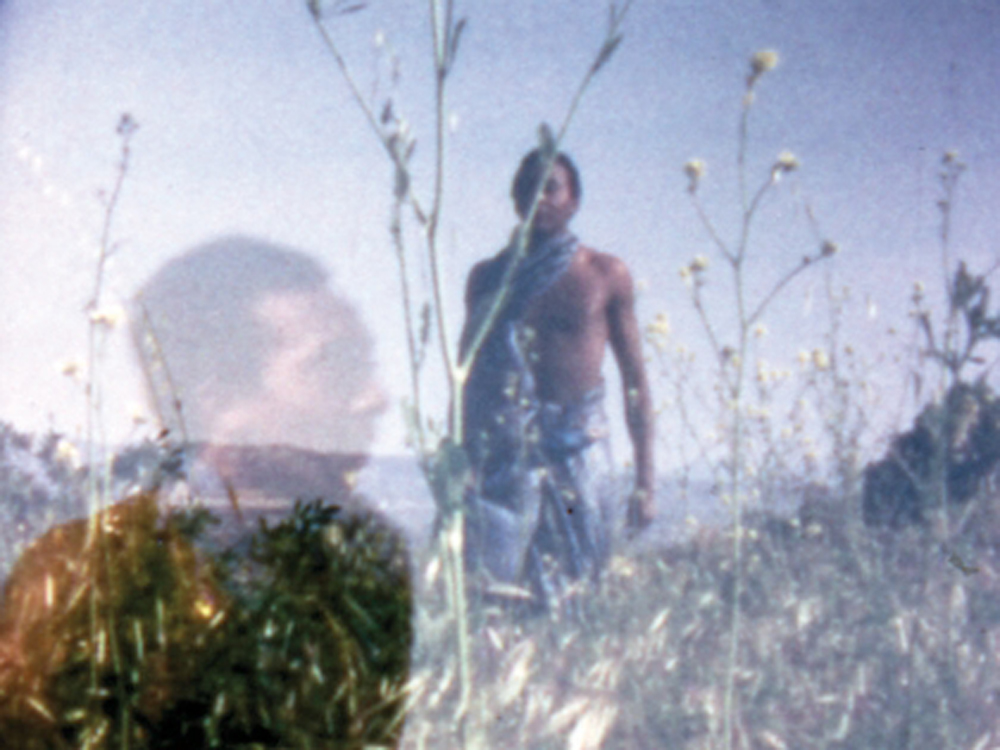
Stan Brakhage was living, for a time in the early sixties with his wife and young children, in San Francisco, in the garage of musician and composer Morton Subotnick, who, along with Pauline Oliveros and Ramon Sender, had organized the San Francisco Tape Music Center. In addition to being a studio for the development of experimental electronic music, the Tape Music Center presented concerts, such as the premiere of Terry Riley’s groundbreaking masterpiece of early minimalism and indeterminacy, In C. They also did avant-garde theater pieces with the San Francisco Mime Troupe, and hosted screenings by Canyon Cinema. There was a lot of cross-pollination and collaboration among these artists, who were working with, and influencing each other. Brakhage made a film of Subotnick and Sender improvising, which was shown on public television but subsequently lost. Steve Reich contributed some of his early tape pieces to two films by Robert Nelson, Plastic Haircut, from 1963, and their collaboration with the San Francisco Mime Troupe, Oh Dem Watermelons in 1965. Ramon Sender provided his tape outtakes to Bruce Baillie for a few of his films, and the two were close at the time. This remarkable creative burst of activity is largely overshadowed by the events which occurred in the latter part of the decade within the city, but was important in setting the stage for the cultural explosion that followed. Ramon Sender recalled, in an interview with David Bernstein in his fascinating book on the history of the Tape Music Center (The San Francisco Tape Music Center: 1960s Counterculture and the Avant-Garde), that Stan Brakhage “was the first, I guess, real hippie I had met… He was a guy who was living in a very hippie-like fashion—I’d never seen that before.”
In December 1962, Canyon Cinema published a newsletter providing information to the local film community. First called simply the News, conceived by author and film critic Ernest Callenbach, who was at the time the editor of the University of California Press’s Film Quarterly, and edited by Baillie, this informal publication evolved into the Canyon Cinemanews, which by the end of the 60s had readers well beyond the Bay Area, and expanded its content beyond its initial local focus. Opinionated open letters penned by passionate filmmakers, gossip, artistic debates, interviews, poems, drawings, photographs, and even recipes graced the pages on the Cinemanews over the years, many of which were reprinted in Scott McDonald’s extensive and extraordinary book Canyon Cinema, the Life and Times of an Independent Film Distributor, and paint a fascinating portrait of the independent film community of the time.
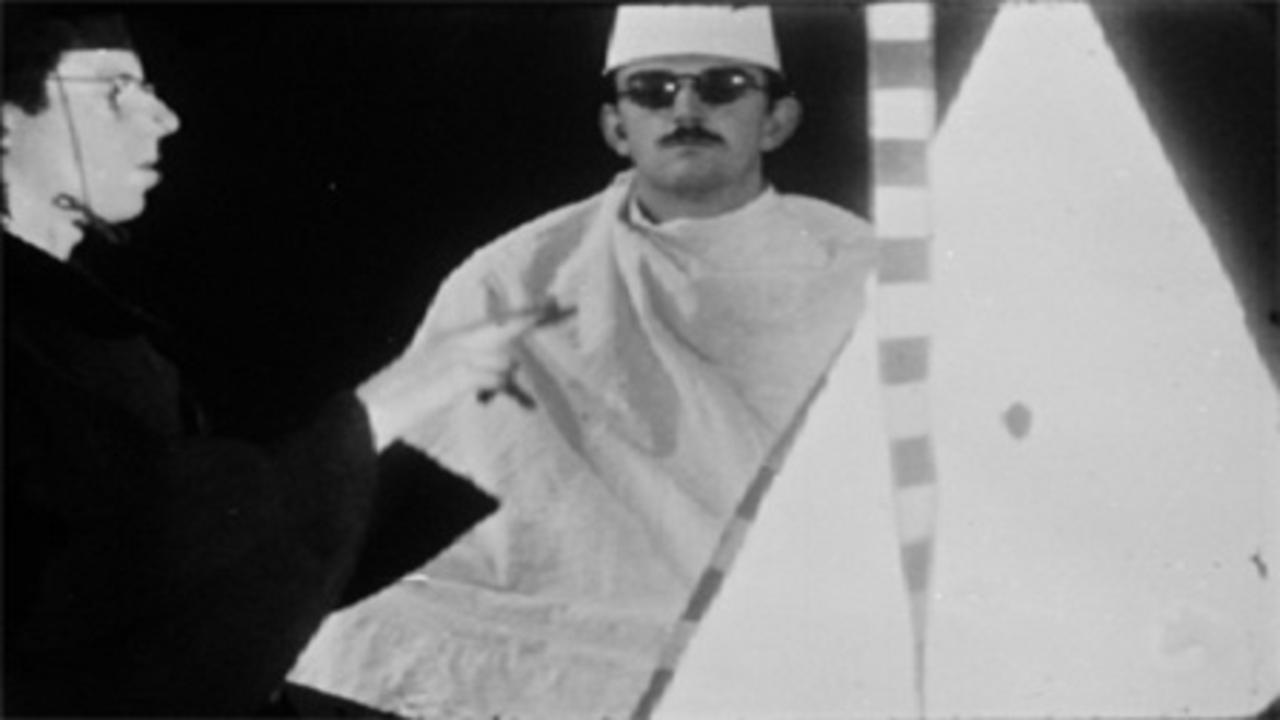
Canyon’s exhibition program eventually moved to the San Francisco Art Institute, and became the Canyon Cinematheque, then the San Francisco Cinematheque, and in 1966 Canyon Cinema established a distribution co-op, inspired by Jonas Mekas’ Film-Makers’ Cooperative in New York City. Baillie announced, colorfully, in the November issue of the News that “Canyon Cinema Co-op is a federation of willing devotees of the magic lantern muse, consisting of artists engaged in the creation of 16mm films, 8mm film and other related light and image projection media. The devotees have a policy of non-policy, and are subject to only the barest and most basic ‘procedures’ for co-operatively distributing their films or informing likely audiences of their light-projection capacities.” A catalog of films available for rental or sale was included alongside the declaration. It listed seventy-five films by thirty-one filmmakers. Two years later the Co-op was offering almost five hundred films by 165 filmmakers. Today Canyon Cinema offers more than 3,500 films, including work by Jonas Mekas, Kenneth Anger, Les Blank, and many many others.
Exploring the Canyon Cinema collection reveals quite a few treasures beyond the giants of avant-garde filmmaking. Over the nearly fifty years since it began as a distributor, a wide variety of artists from all over the world, working in many formats have contributed to the vast catalog. A filmmaker such as Walter Ungerer, for example, began in the early sixties creating experimental films on a Bolex, 8mm, 16mm film, painting and scratching directly on the surface of the celluloid, filming landscapes and nature. Meet Me Jesus, his short film from 1966 is an example of his playful early style. By 1976’s The Animal, he was constructing dreamy long-form, almost narrative explorations of isolation and loss set in New England. In the 90s, Ungerer began exploring computers and video to generate unique textures which can be seen in 1995’s A Warm Day Comes After a Cold Winter. His recent work utilizes digital video and modern computer manipulation possibilities to remarkable effect. Clouds, from 2012, is hypnotic and beautiful, returning his camera’s gaze to nature. Monarda, from 2010, uses extreme digital processing to achieve results that sit firmly in the tradition of his early work, and that of his contemporaries in the sixties such as Brakhage.
Janis Crystal Lipzin is another filmmaker whose work spans several decades and several mediums. Cracks Between the Stones began life on Super 8mm film. She shot the footage over a ten-year period at various disparate locations across the globe; Stonehenge, the European Arctic, and many American Indian sites. A six-minute version of the piece was part of a window installation in San Francisco in 1991 that she created with Bill Baldewicz. The footage was transferred to digital video in 2004 and the current version examines the history and the way we view earlier cultures. De Luce 2: Architectura from 2013 also originated on super 8, footage shot in a variety of locations was hand-processed meticulously before being transferred to video. The piece is part of a series, De Luca (on Light), inspired by a medieval text by the English scientist and theologian Robert Grosseteste, who wrote: “At the beginning of time, lightly drew out the matter, along with itself, into a mass as great as the fabric of the world.”
Dana Plays’ work also explores the boundaries of multiple formats. Agitprop, from 2013 uses 16mm newsreels from before World War 2 and manipulates them using optical printing, a technique that involves a reel of the film being projected through a lens to expose another reel of film (or in this case High Definition digital video). She also played with the visual effect of the decomposition of the film stock, and the speed of the reels, and achieves a striking and disorienting juxtaposition of this propaganda from the last century and an abstract, haunting visual experience.
Many other filmmakers and films of the Canyon Cinema collection deal with explicitly political subject matters in interesting ways, carrying on the tradition and spirit of Bruce Baillie and the original group of Bay Area filmmakers who developed their style and artistic personas in the charged political atmosphere (The early Canyon screenings were often held under the threat of being shut down by the authorities, either for their radical political stances or their propensity for showing films deemed to be obscene, in one case the San Francisco Police Department actually seized the reels being shown). Avant-garde film historian P. Adams Sitney calls Saul Levine “the foremost dissenting filmmaker in America.” His films are kinetic, charged political expressions. New Left Notes uses structural film techniques to assemble a collage of images about the Vietnam War and the opposition to it in America. Tyler Turkle‘s State of Snakes from 2008 is a sardonic video piece in three parts that uses reptilian analogies to look at the rivalry between America’s two major political parties in 21st century Florida. Scott Stark is another irreverent political satirist. His 2008 mini digital video deconstruction/reconstruction of the American flag, Right, take one of the most ubiquitous symbols and literally breaks it apart with playfully artistic results.
It’s revelatory to see how filmmakers from more recent decades have brought the rich history and traditions of the avant-garde film movement into the future. Andy Moore‘s films take inspiration from Maya Deren and Pat O’Neill, but have a decidedly modern approach, especially with the use of music. 1994’s Split Description uses and image on image technique along with a soundtrack of chopped bits of audio not unlike the Musique Concrete of French Composer Bernard Parmegiani. Victor Faccinto used pieces of tape and bleach to structurally alter 16mm film which was then transferred to video in 2001’s Visual Remains, a delightful updating of Stan Brakhage’s early painted and scratched films. Mexican filmmaker Sergio Batiz glued leaves and pieces of grasshoppers to film emulsion in Happy Meal, from 2012 which directly recalls Brakhage’s Mothlight, from 1964.
Canyon Cinema is alive and vital in the new century. After experiencing a financial crisis at the beginning of the decade, the Co-op (now the Canyon Cinema Foundation) was able to achieve non-profit status, something the organization has been seeking for much of its life. A generous grant from the George Lucas Family Foundation arrived early this year. Lucas had, after all, attended and been inspired by Canyon’s screenings of Stan Brakhage and Bruce Conner’s otherworldly visions as a young man (Kate McCabe also pointed out to the attendees of the screening I was at that Pat O’Neill had worked on the optical effects on Star Wars). Antonella Bonfanti, formerly the Collection Manager, took over as Director this past summer and is already hard at work to ensure that Canyon Cinema’s incredible legacy, history, and body of work continues to inspire for years to come.
Visit the website for more on Canyon Cinema.

